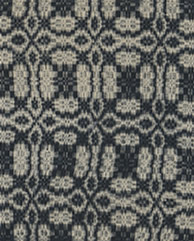Lesson Plans:
Weaving From a Draft Pattern
Grades/Subjects: 4-8 Art Education
Related Subjects: Social Studies and Math
Learning Outcomes
- Referring to the coverlets section of the Craft Revival project website, teachers can set the tone of the Craft Revival period.
- Students will be introduced how a weaving was usually initiated by sketching a draft of the pattern, just as artists create a sketch, before making a final work.
- Students will personalize their draft and then go on to weave their drafted pattern on a simple loom constructed from the frame.
- Once the pattern emerges, students can give their pattern a name based on what it looks like.
Teacher Planning
Teacher will visit the Craft Revival Period website to examine the coverlets and examples of weaving in the database, noticing how patterns were often given names. Images and information may be viewed for preparation of the discussion of the use of drafts. It will be necessary to prepare the wooden frames with the same number of holes, evenly placed from the left and to the right sides.
Materials/Resources
- Graph Paper
- Colored Pencils
- Wooden frame such as old painting frames w/holes added for warp thread
- Pale colored thread for warp
- Skeins of various colored yarns all the same thickness for wefting
Procedure
- Teacher will lead a discussion on the weavings based on drafts during the Craft Revival.
- Students will write down highlights of the discussion that will lead into a teacher demonstration.
- Teacher will demonstrate how to make a draft using graph paper.
- Have students make a draft pattern on graph paper, and color it. For younger ages, use only 3 colors; use more for older grades.
- Students will string warp onto their looms.
- Teacher can demonstrate how to apply yarn (weft) to the warp. Then instruct students to weave.
- Students can begin weaving onto their warped loom.
- They may name their pattern and write it on the top of the paper.
- After completed, students can display their weavings and explain the meaning behind their title of the weaving.
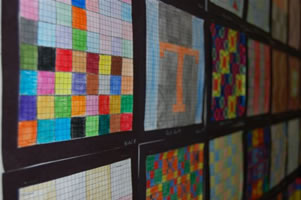
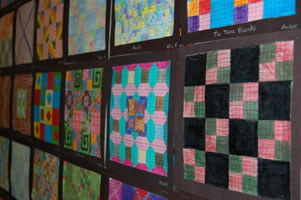 Students of Ms. Bates’s math class created and named their own draft patterns on graph paper
Students of Ms. Bates’s math class created and named their own draft patterns on graph paper
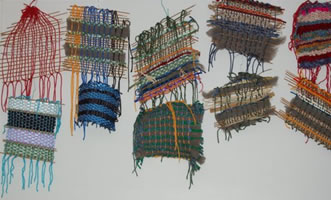
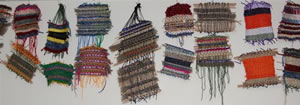
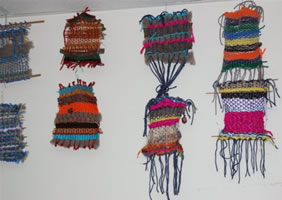 After creating a draft, each student wove with colored yarn to best match their draft pattern.
After creating a draft, each student wove with colored yarn to best match their draft pattern.
Assessment
Teacher can assess how well students attempted to replicate their drawn pattern, and whether they gave their pattern a unique name. Students may put the finished weaving on display and talk about their experience with the project.
Comments
For 7th -8th graders, have them build their own loom frame and maybe have a large one that several can work on. Study the website for further information on weaving, particularly coverlets.
North Carolina Curriculum Alignment
- Visual Arts Objectives 2.02, 5.05
- Math Competency Goal 5
- Social Studies Objective 5.02
- Bruland, Kriston M., www.handweaving.net Contains drafts and refers to books with drafts; Search: Griswold, Ralph E, Collection of Appalachian weaving drafts.
- Eliza C. A Book of Hand Woven Coverlets. (Boston, MA: Boston Press, 1931)
- Eaton, Allen. Handicrafts of the Southern Highlands. (New York: Russell Sage Press, 1937) p118, Preserving old mountain drafts.
- Monaghan, Kathleen & Joyner, Hermon. You Can Weave! Projects for Young Weavers. (Worcester, MA: Davis Publications, 2000)
Bibliography:
- Jada Hansen.
This lesson was inspired by one similar lesson taught by Ms. Kris Bates as an 8th grade Math project, Cullowhee Valley School, Cullowhee, NC.
